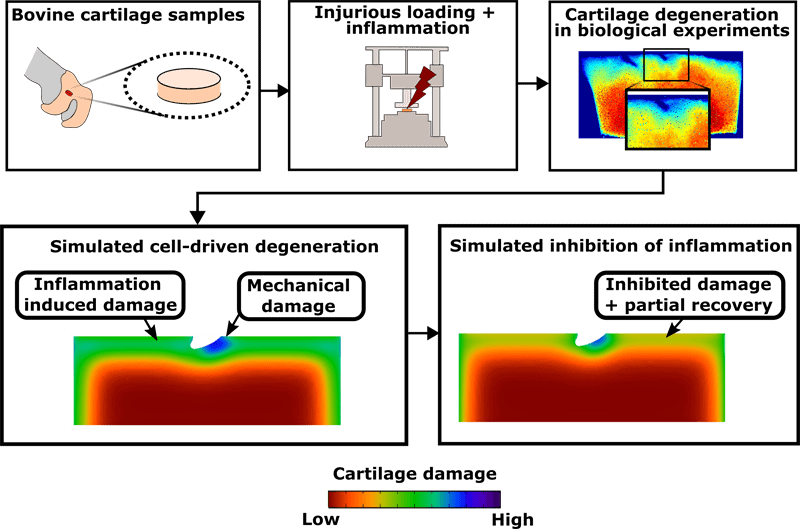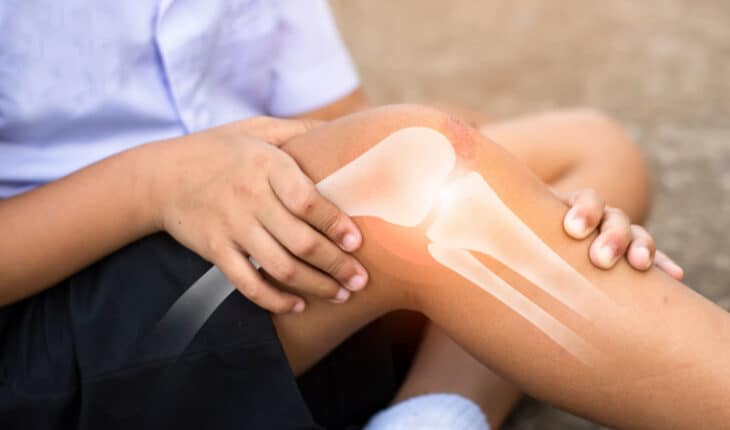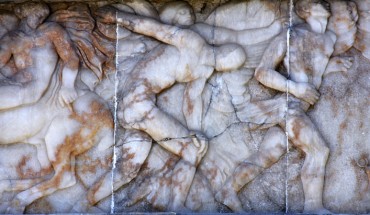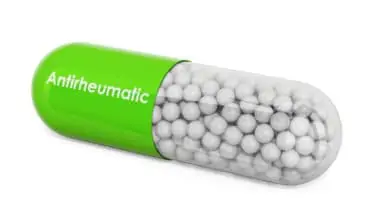Researchers unraveled new mechanisms behind articular cartilage healing after injury.
Understanding how the knee joint environment affects cartilage cells is crucial for joint health. Knowledge of cell-driven cartilage degeneration mechanisms can support the development of effective pharmaceutical interventions for osteoarthritis.
The burden of musculoskeletal diseases, such as osteoarthritis, is increasingly affecting patients’ quality of life and bringing enormous costs to health care. In efforts to reduce the burden of the disease, computational models have been developed to predict cartilage degeneration onset and progression. Current knee joint models have shed light on the development of biomechanical joint forces during walking, and on the severity of joint inflammation. However, cell-tissue-level computational models have gained much less attention, even though cells contribute remarkably to tissue changes in cartilage. Thus, a better understanding of early osteoarthritis mechanisms at the cell- and tissue-levels is needed to enable the prediction of early disease progression. In addition, these models could also open new avenues for model-guided pharmaceutical research aiming to mitigate osteoarthritis progression.
As a collaborative work between the University of Eastern Finland (UEF), Lund University (LU), the University of Iowa (UIOWA), and Massachusetts Institute of Technology (MIT), researchers have now incorporated the influence of cells in a new numerical model to discover degeneration processes in mechanically loaded and inflamed cartilage. This model considers different forms of cell death, oxidative stress, and pro-inflammatory biomolecules. As in previous biological experiments, the model predicted that injurious loading causes aggressive cell damage and cartilage degeneration near cartilage lesions, whereas inflammation induces widespread degeneration also in the intact regions.
Interestingly, mitigation of inflammation led to a partial recovery of the cartilage composition consistent with previous literature. This result suggests that the approach could help in pinpointing potential targets for new early intervention strategies and it has great potential to serve as a computational “test track” for different anti-inflammatory or anti-oxidative drug treatments, for example.
“After thorough calibration, the model could provide valuable information to assess drug delivery and effects of therapeutic treatments in cartilage. Thus, in our ongoing work with the University of Iowa, we will utilise the model to study the effectiveness of their antioxidative drug candidate. The model could help in assessing when the drug should be injected into the joint to get the greatest benefit, and what dosage should be used for a certain patient. These factors in a knee joint, for example, may depend on the mechanical and inflammatory aspects of each patient, both of which can be considered with our computational model,” says the study’s lead author, Doctoral Researcher Joonas Kosonen of the University of Eastern Finland.
The study has received funding from the Doctoral Programme in Science, Technology and Computing (SCITECO), strategic funding of the University of Eastern Finland, the Academy of Finland (grant nos. 334773 – under the frame of ERA PerMed, 324529), Novo Nordisk Foundation (grant no. NNF21OC0065373, the Center for Mathematical Modeling of Knee Osteoarthritis (MathKOA)), Alfred Kordelin Foundation (grant no 190317), Maire Lisko Foundation, Sigrid Juselius Foundation, Saastamoinen Foundation, Instrumentarium Science Foundation, the Swedish Research Council (2019-00953—under the frame of ERA PerMed).
Injury-related cell death and proteoglycan loss in articular cartilage: Numerical model combining necrosis, reactive oxygen species, and inflammatory cytokines. PLOS Computational Biology (2023). DOI: 10.1371/journal.pcbi.1010337.
New computational model was able to predict experimentally observed degradation and unravel the mechanisms behind partial recovery of injured articular cartilage.

Photographer: Joonas P. Kosonen
New computational model was able to predict experimentally observed degradation and unravel the mechanisms behind partial recovery of injured articular cartilage
- New lipid-based pathway discovered as key to memory formation - 25th June 2025
- Crucial link could explain how Alzheimer’s takes hold - 25th June 2025
- Understanding Your Mind Can Improve Daily Life - 25th June 2025






